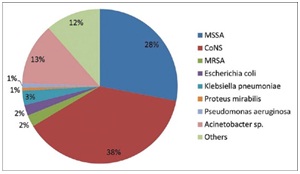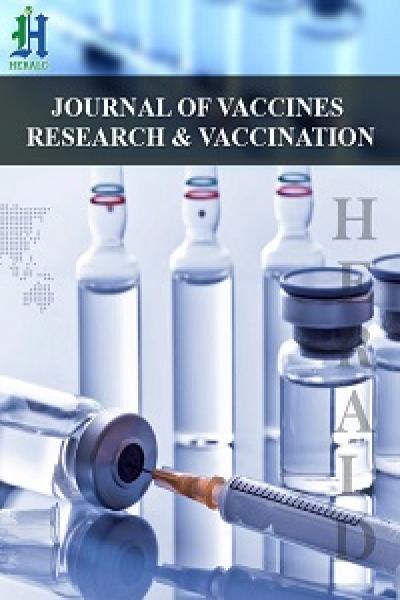
Infections That Mobile Phones Transmit
*Corresponding Author(s):
Akanksha RathiDepartment Of Community Meicine, Baba SahebAmbedkar Medical College & Hospital, Delhi, India
Tel:+91 9911214187,
Email:akanksharathi.dr@gmail.com
INTRODUCTION
Once people thought that they have tamed technology but lately it seems that people have indeed become the slave of it. Mobile phones are a perfect example of this. People take them everywhere, in bed, in washroom, in gym, in restaurants, in hospitals, even to funerals. They are passed on from one person to another, come in contact with ears, mouths and hands and are passed back. People visit the most infectious places with phones and no one has heard about disinfecting them, they are considered safe to be transported and used everywhere. But studies are proving otherwise.
Each square inch of cell phone contains roughly 25,000 germs [1], making it one of the filthiest things one can come in contact with on a daily basis. Studies have shown that phones have more pathogenic bacteria like coliforms than the toilet seats as toilet seats are disinfected at least some times [2]. They are indeed carriers of germs and viruses and might be implicated in transmitting the majority of infectious diseases, just that people consider them invisible fomites. They carry hundreds and thousands of microorganisms, some of which need to be just a few in number to cause illness.
Much of the disease-causing bacteria found are transferred from person to person through touch, which means that once this bacteria is on the hands, one only has to then touch one’s eyes or nose for the bacteria to find an easy route into the body. Phones can transmit common illness like flu, diarrhea and eye infections. Some studies have found extremely resistant and dangerous bacteria like MRSA (Methicillin Resistant Staphylococcus aureus) [3] and viruses [4] like influenza virus on phones. Considering the roles of fomite transmission in swine flu, it is also a possibility that mobile phones can play a role in rapid spread of this infection.
In hospital settings, it is a common practice that mobile phones are shared amongst health care professionals. Health care professionals shuffle between patients, often without prior sanitizing. Despite the benefit of increased, timely communication between caregivers, sharing mobile devices can lead to the spread of Healthcare-Associated Infections (HAIs) if they aren't properly disinfected. Thus mobile phones can cause the transmission of nosocomial infections [5] to patients and they can fall even more ill by the hands of their own saviors. Infections can also transmit to health care persons themselves. However, there is a paucity of published studies with standards for cleaning mobile phones. In a study done on 32 Health Care Worker (HCW) in hospital setting, it was observed that after the use of a mobile phone, the rate of bacterial contamination of HCWs’ hands increased to 93.7% [5]. The bacteria that were isolated from HCW’s hands were Klebsiella pneumonia, coagulase negative Staphylococcus and Bacillus anthracoid. Few isolates of Staphylococcus were methicillin resistant and some of the gram negative bacteria were even found to be multi drug resistant. In another study, 400 swab samples from mobile phones were collected and sent for culture [6]. The results revealed that more than half of the mobile phones were having bacterial contamination. Most common bacterial agents found were Coagulase-Negative Staphylococcus(CNS) and S. aureus. Other bacterial agents identified were Enterococcus feacalis, Pseudomonas aeruginosa, Escherichia coli, and Klebsiella spp. However, antibiotic resistance was not seen and most strains were responsive to Fluoroquinolones and third-generation cephalosporin. In a study done in India [7], the mobile phones and dominant hands of 386 participants were sampled from four different groups, hospital doctors and staff (132), college faculty and staff (54), medical students (100) and control group (100). Eighty two percent mobile phones and eighty percent hand swab samples were contaminated. The most commonly found bacterial strains were Coagulase-Negative Staphylococcus (CNS), Methicillin Sensitive Staphylococcus aureus (MSSA), Methicillin Resistant Staphylococcus aureus (MRSA), Acinetobacter species, Escherichia coli, Klebsiellapneumoniae, Pseudomonas species and Enterococcusspecies. The distribution of various bacterial isolates that were found in the study has been given in figure 1.
 Figure 1: Distribution of various bacterial isolates in the mobile phones.
Figure 1: Distribution of various bacterial isolates in the mobile phones.
The Centre for Disease Control (CDC) recommends a cleaning regimen that's effective, fast acting, easy to follow, and economical. Restriction of mobile phone use in clinically sensitive areas, such as operating environment and ICU as a start point, is recommended [5]. Moreover, screening of Healthcare workers mobile phones inside the hospital should be done while doing environmental screening. More studies should be done to find out the proportion of infections attributable to cellphones and ways should be devised to clean them rapidly and effectively.
AUTHOR’S DECLARATIONS
The author declares that the manuscript has not been published except as a brief abstract in the proceedings of a scientific meeting or symposium. The author declares that the manuscript has not been submitted for publication elsewhere. The author declares that all authors have contributed significantly. The author declares that all authors are in agreement with the content of the manuscript. The author declares that there is no conflict of interest.
REFERENCES
- Boshell P (2013) Your mobile phone is dirtier than you think. Deb Group Ltd, Derby, UK.
- Deccan Chronicle (2015) Your smartphone has more germs than a toilet seat. Deccan Chronicle, Hyderabad, India.
- Pathare NA, Asogan H, Tejani S, Al Mahruqi G, Al Fakhri S, et al. (2016) Prevalence of methicillin resistant Staphylococcus aureus [MRSA] colonization or carriage among health-care workers. J Infect Public Health 9: 571-576.
- Bothelo-Nevers E (2016) Viruses on mobile phones. MDedge, Rockville, MD, USA.
- Badr RI, Badr HI, Ali NM (2012) Mobile phones and nosocomial infections. Int J Infect Control 8.
- Akinyemi KO, Atapu AD, Adetona OO, Coker AO (2009) The potential role of mobile phones in the spread of bacterial infections. J Infect Dev Ctries 3: 628-632.
- Pal S, Juyal D, Adekhandi S, Sharma M, Prakash R, et al. (2015) Mobile phones: Reservoirs for the transmission of nosocomial pathogens. Adv Biomed Res 4: 144.
Citation: Rathi A, Sharma S (2017) Infections That Mobile Phones Transmit. J Vaccines Res Vaccin 3: 006.
Copyright: © 2017 Akanksha Rathi, et al. This is an open-access article distributed under the terms of the Creative Commons Attribution License, which permits unrestricted use, distribution, and reproduction in any medium, provided the original author and source are credited.

